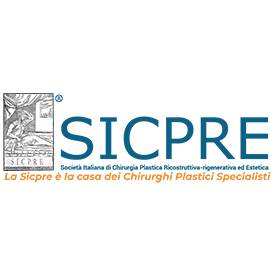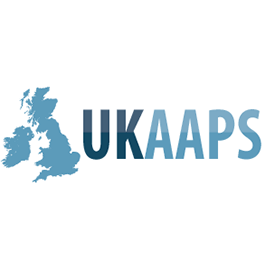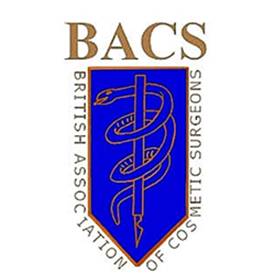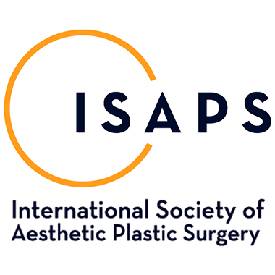 Rhinoplasty is surgery to reshape a nose. With the nose being a prominent feature on the face, it plays an influential role in the conformity of your facial features.
Rhinoplasty is surgery to reshape a nose. With the nose being a prominent feature on the face, it plays an influential role in the conformity of your facial features.
One that is out of proportion, has a bump, or is too wide to name a few reasons, often leads people to seek nose surgery.
Rhinoplasty by Dr. Frati can solve many nasal issues. The smoothing of the nose bridge, the upturning of a drooped nose, or even the reduction of large nostrils. This can all be discussed if you would like to look at an initial consultation.
Interested to know more about what Dr. Frati can do for you?
Rhinoplasty with Dr. Frati
Dr. Frati holds many accolades in his field. He has been on television and often appeared in national newspapers, his reputation has allowed him to work with the likes of film stars and glamour models, and he is still one of the most trusted consultants operating out of the UK.
When considering rhinoplasty, it is important to pick the right surgeon, one who you can rely on to perform such a life changing operation, there is minimum room for mistake.
Dr Frati fits this bill accordingly. He combines his 20 years experience at the top of his field, with modern techniques that allow for faster recovery periods and safer procedures.
Dr. Frati also prides himself on highest and friendly approach, and if you are ready to take your rhinoplasty consideration to the next step, Dr. Frati and his team would love to hold a first consultation with you, to help answer any questions you may have. Please call us on 020 3633 2619 or use our contact form, and a friendly member of the team will be sure to get back in touch at the first possibility.
Types of Rhinoplasty Procedure
There are many types of Rhinoplasty, and it is vitally important that you consult with Dr. Frati so you can discuss your array of options. We have highlighted the main rhinoplasty procedures below with a brief description of each technique.
Open Rhinoplasty
Open rhinoplasty is a surgical technique used for nasal reshaping (rhinoplasty) in which the surgeon makes an incision on the external skin of the nose, usually along the columella, which is the narrow strip of tissue that separates the nostrils. This approach is also known as the "external" or "open structure" rhinoplasty technique. It is distinguished from closed rhinoplasty, where all incisions are made inside the nostrils, resulting in no external scars.
A quick summary of how Open Rhinoplasty Works
Incision: In an open rhinoplasty, the surgeon creates a small incision on the columella, the fleshy strip of skin and tissue that separates the nostrils. This external incision allows the surgeon better visibility and access to the internal structures of the nose.
Visualisation: By lifting the nasal skin and tissue, the surgeon gains a direct and clear view of the nasal cartilage and bone. This enhanced visibility is particularly useful for complex or detailed nasal surgeries.
Surgical Precision: The open rhinoplasty approach offers greater control and precision in reshaping the nasal structures, making it well-suited for cases where extensive changes or reconstructions are required.
Suture Closure: After the necessary alterations have been made to the nasal framework, the surgeon meticulously closes the external incision with fine sutures. Over time, the scar on the columella usually becomes quite inconspicuous and often fades significantly.
Open rhinoplasty is typically chosen in the following situations:
- Complex or revision rhinoplasty: When significant structural changes are needed or when the patient has undergone prior nasal surgery.
- Cases requiring precise control: Surgeons may prefer the open approach for intricate refinements, such as tip work or graft placement.
- Improved visibility: Surgeons may opt for open rhinoplasty to achieve a better view of the nasal anatomy, making it easier to address specific concerns.
It's essential to consult with a board-certified plastic surgeon such as Dr. Frati to determine the most appropriate rhinoplasty technique for your unique goals and needs. Dr. Frati can consider your nasal anatomy, aesthetic objectives, and any prior surgeries to recommend the best approach for you.
Closed Rhinoplasty
Closed rhinoplasty, also known as endonasal rhinoplasty or scarless rhinoplasty, is a surgical technique used for nasal reshaping (rhinoplasty) in which all the incisions are made inside the nostrils. Unlike open rhinoplasty, which involves an external incision on the columella (the strip of tissue that separates the nostrils), closed rhinoplasty is performed entirely through the nostrils. This approach is known for leaving no external scars.
Here's an overview of closed rhinoplasty:
Internal Incisions: In closed rhinoplasty, the surgeon makes incisions on the inside of the nose, typically within the nostrils. These incisions provide access to the nasal structures that need to be modified or reshaped.
Limited Visibility: Since the surgeon works through small internal incisions, the visibility of the nasal anatomy is somewhat limited compared to open rhinoplasty. However, skilled surgeons are experienced in working within these constraints.
Tissue Manipulation: The surgeon can access and manipulate the nasal bones, cartilage, and soft tissues to achieve the desired changes to the nose's shape, size, and structure.
Suture Closure: After making the necessary modifications, the surgeon closes the internal incisions with sutures. Since there are no external incisions, there are no visible external scars.
Closed rhinoplasty is commonly chosen in the following situations:
- Minor to moderate nasal reshaping: When the desired changes to the nose are relatively straightforward and don't require extensive exposure or structural alterations.
- Patients concerned about visible scarring: Closed rhinoplasty is often recommended for individuals who want to minimize the risk of external scarring, as there are no visible scars on the outside of the nose.
- Faster recovery: Some patients may experience a quicker recovery with closed rhinoplasty due to the absence of external incisions.
The choice between closed and open rhinoplasty depends on various factors, including the complexity of the procedure, the surgeon's preference and expertise, and the patient's specific goals and anatomy. A consultation with Dr. Frati is essential to determine the most suitable rhinoplasty approach for an individual's needs.
Tip Rhinoplasty
Tip rhinoplasty, also known as nasal tip surgery, is a specific type of rhinoplasty procedure that focuses primarily on altering and refining the shape, size, and appearance of the nasal tip. Unlike a full rhinoplasty, which can involve changes to the entire nose, tip rhinoplasty targets the lower portion of the nose, specifically the nasal tip and the surrounding structures.
Some common goals of tip rhinoplasty include:
Nasal Tip Refinement: Tip rhinoplasty is often performed to refine and reshape a bulbous or wide nasal tip. Surgeons can sculpt the tip to make it more defined and proportionate to the rest of the nose and face.
Nasal Tip Projection: Some individuals have a nasal tip that is too flat or lacks projection. Tip rhinoplasty can be used to increase the projection of the tip, giving it a more prominent appearance.
Tip Rotation: The angle at which the nasal tip points can be adjusted during tip rhinoplasty. Surgeons can rotate the tip upward (upward rotation) or downward (downward rotation) to achieve the desired aesthetic.
Nostril Size and Shape: In some cases, tip rhinoplasty may also involve adjustments to the size and shape of the nostrils, particularly if they are asymmetrical or flared.
Correction of Minor Irregularities: Tip rhinoplasty can address minor irregularities or asymmetries in the nasal tip, such as cartilage asymmetry or unevenness.
It's important to note that tip rhinoplasty is a more focused and less invasive procedure compared to a full rhinoplasty. It is often chosen by individuals who are generally satisfied with the appearance of the upper part of their nose but seek specific improvements in the tip region. As with any cosmetic surgery, it's crucial to consult with a board-certified plastic surgeon such as Dr. Frati for your specific needs.
Alarplasty
Alarplasty, also known as alar base reduction or nostril reduction surgery, is a cosmetic surgical procedure that focuses on altering the size and shape of the nostrils. This procedure is often performed to address concerns related to the width or flaring of the nostrils, helping to achieve better facial harmony and balance.
Here's an overview of alarplasty:
Nostril Reduction: Alarplasty specifically targets the alar base, which is the area where the nostrils meet the cheeks. It involves the surgical modification of the nostrils to reduce their width or flare.
Incisions: Typically, small incisions are made at the junction between the nostrils and the cheeks, near the outer edges of the nostrils. The precise location and size of these incisions can vary depending on the individual's anatomy and the desired outcome.
Tissue Removal: The surgeon may remove a wedge-shaped piece of tissue from the base of the nostrils to narrow them. This tissue removal is carefully planned to ensure that the nostrils maintain a natural and symmetrical appearance.
Suture Closure: After the necessary tissue adjustments are made, the surgeon closes the incisions with sutures. These sutures are usually absorbable and do not need to be removed.
Alarplasty is typically performed for the following reasons:
- Wide or Flaring Nostrils: Individuals with wide or flaring nostrils may seek alarplasty to achieve a more proportionate and balanced appearance.
- Facial Harmony: Alarplasty can help enhance facial harmony by reducing the prominence of the nostrils, making them more in line with other facial features.
- Ethnic Rhinoplasty: Alarplasty is sometimes part of ethnic rhinoplasty procedures, as people from different ethnic backgrounds may have specific aesthetic concerns related to the shape and width of their nostrils.
Alarplasty is considered a relatively straightforward and minimally invasive procedure when compared to more extensive rhinoplasty surgeries. However, it is still a surgical procedure that should be performed by a board-certified plastic surgeon such as Dr. Frati. Dr. Frati will work closely with the patient to determine the desired outcome and create a treatment plan tailored to their specific goals.
Septoplasty
Septoplasty is a surgical procedure performed to correct a deviated septum, a condition in which the nasal septum (the thin wall of cartilage and bone that separates the two nasal passages) is crooked or displaced, causing obstruction or blockage in one or both nostrils. This obstruction can lead to various nasal and breathing problems.
Here's an overview of septoplasty:
Diagnosis: Before septoplasty, a patient typically undergoes a thorough evaluation by an ear, nose, and throat (ENT) specialist or a rhinologist. This evaluation may include a physical examination, nasal endoscopy, and sometimes imaging studies like a CT scan to assess the extent and location of the septal deviation.
Surgical Procedure: Septoplasty is performed under local or general anesthesia, depending on the patient's and surgeon's preferences. During the procedure, the surgeon makes an incision inside the nostril to access the deviated septum.
Straightening the Septum: The surgeon carefully lifts the mucosal lining covering the septum and then reshapes or repositions the deviated septum, often by trimming, removing, or repositioning the cartilage and bone. The goal is to create a straighter, more symmetrical nasal septum that allows for improved airflow through the nasal passages.
Closing the Incision: After the necessary adjustments are made to the septum, the surgeon closes the incision with dissolvable sutures or other closure techniques. No external incisions or visible scars are typically associated with septoplasty since all the work is done inside the nostrils.
Septoplasty is primarily performed to address functional issues related to a deviated septum, including:
- Nasal obstruction: Correcting a deviated septum can alleviate difficulty breathing through the nose, reduce nasal congestion, and improve airflow.
- Snoring and Sleep Apnea: In some cases, septoplasty can help reduce snoring and improve sleep apnea symptoms by opening the airway.
- Chronic Sinusitis: A deviated septum can contribute to chronic sinusitis. Septoplasty may be part of the treatment plan for individuals with recurrent sinus infections.
It's important to note that septoplasty is a medical procedure aimed at improving nasal function, and its primary goal is not cosmetic. However, some individuals may choose to combine septoplasty with cosmetic rhinoplasty to address both functional and aesthetic concerns simultaneously. Septoplasty is considered a relatively safe and effective procedure when performed by a skilled and experienced ENT surgeon or rhinologist. Recovery times can vary, but most patients can return to their normal activities within a week or two following surgery.
Septorhinoplasty
Septorhinoplasty is a surgical procedure that combines two distinct nasal surgeries: septoplasty and rhinoplasty. This combined procedure is performed to address both functional and cosmetic issues of the nose. Here's a breakdown of what each component entails:
Septoplasty: This part of the procedure focuses on correcting a deviated septum, which is the thin wall of cartilage and bone that separates the two nasal passages. A deviated septum can lead to breathing difficulties, nasal congestion, and other functional problems. During septoplasty, the surgeon makes internal incisions inside the nostrils, repositions or removes the deviated portions of the septum, and straightens it to improve nasal airflow and function.
Rhinoplasty: Rhinoplasty, often referred to as a "nose job," is a cosmetic surgery that focuses on altering the size, shape, or appearance of the nose to enhance its aesthetics. This component of septorhinoplasty allows patients to address concerns related to the external appearance of the nose. It can involve reshaping the nasal tip, reducing or augmenting the nasal bridge, refining the nostrils, or addressing other cosmetic issues.
Septorhinoplasty is typically chosen by individuals who have both functional and aesthetic concerns about their nose. Common reasons for undergoing septorhinoplasty include:
- Correcting breathing problems caused by a deviated septum while simultaneously improving the appearance of the nose.
- Enhancing facial harmony by addressing cosmetic issues such as a hump on the bridge of the nose, a bulbous nasal tip, or asymmetry.
- Addressing trauma-related injuries to the nose that have resulted in both functional and cosmetic deformities.
- Combining septoplasty with rhinoplasty allows for a more comprehensive approach to nasal surgery, ensuring that both functional and aesthetic goals are achieved in a single procedure.
Septorhinoplasty is a complex surgical procedure that requires the expertise of a skilled and experienced plastic surgeon such as Dr. Frati. The specific techniques used and the surgical plan will vary depending on the individual's unique anatomy and goals. Recovery times and post-operative care will also depend on the extent of the surgery and the patient's overall health. Patients considering septorhinoplasty should have a thorough consultation with Dr. Frati to discuss their concerns, expectations, and the potential benefits and risks of the combined procedure.
Preservation Rhinoplasty
Preservation rhinoplasty, also known as preservation or preservationist rhinoplasty, is an approach to nasal surgery that emphasizes maintaining and preserving the natural structures of the nose as much as possible while making subtle, conservative changes to improve its appearance. This technique stands in contrast to traditional or "reductive" rhinoplasty, where significant cartilage and bone removal may be involved to achieve the desired cosmetic changes.
Key features of preservation rhinoplasty include:
Minimal Tissue Removal: Preservation rhinoplasty involves minimal removal of cartilage and bone from the nose. Surgeons aim to retain as much of the patient's natural nasal anatomy as possible.
Respect for Nasal Function: This approach prioritises preserving nasal function and maintaining proper airflow through the nasal passages. Functional aspects of the nose, such as the nasal septum and other supporting structures, are carefully preserved.
Natural Results: Preservation rhinoplasty focuses on achieving results that look natural and harmonious with the patient's facial features. The goal is to create subtle and proportionate changes rather than dramatic alterations.
Reduced Risk of Complications: Since the procedure is less invasive and involves less tissue manipulation, there may be a reduced risk of complications, such as structural issues or breathing problems, that can occur in more extensive rhinoplasty procedures.
Shorter Recovery Time: Patients undergoing preservation rhinoplasty may experience a shorter recovery period compared to traditional rhinoplasty, as there may be less swelling and bruising.
Preservation rhinoplasty can be an attractive option for individuals who are primarily seeking subtle cosmetic enhancements to their nose without drastically altering their natural appearance or risking functional issues. It may also be suitable for those with concerns about the long-term structural integrity of their nose.
It's important to note that preservation rhinoplasty is not suitable for every patient or every desired outcome. The appropriateness of this approach depends on the patient's specific nasal anatomy, goals, and the expertise of the surgeon. Patients interested in preservation rhinoplasty should consult withDr. Frati to determine the most suitable approach for their individual needs and expectations.
Ultrasonic Rhinoplasty
Ultrasonic rhinoplasty is an advanced surgical technique that utilizes ultrasonic instruments, specifically ultrasonic bone-cutting devices, to perform precise and controlled bone reshaping during a rhinoplasty procedure. This technique has gained popularity in the field of cosmetic and reconstructive rhinoplasty because it offers several advantages over traditional methods of bone manipulation.
Here's how ultrasonic rhinoplasty works and its key features:
Ultrasonic Instruments: Ultrasonic rhinoplasty employs specialised ultrasonic instruments that emit high-frequency sound waves. These waves are used to cut, sculpt, and shape bone and cartilage in a controlled and precise manner.
Precise Bone Sculpting: Traditional rhinoplasty techniques often involve the use of chisels or osteotomes to reshape the nasal bones. Ultrasonic instruments allow for more accurate and fine-tuned bone sculpting, reducing the risk of fractures, irregularities, and complications.
Minimised Trauma: Ultrasonic rhinoplasty is considered less traumatic to the surrounding tissues compared to traditional methods. This can result in reduced post-operative swelling and bruising, potentially leading to a faster recovery and less discomfort for the patient.
Customised Results: Surgeons can achieve highly customised and precise results with ultrasonic rhinoplasty. The technique allows for intricate adjustments to the nasal bones, including dorsal hump reduction, narrowing of the nasal bridge, and other bone-related modifications.
Versatility: Ultrasonic rhinoplasty can be used in various types of rhinoplasty procedures, including primary (first-time) rhinoplasty, revision rhinoplasty, and ethnic rhinoplasty, to address a wide range of aesthetic and functional concerns.
Enhanced Safety: The precision of ultrasonic instruments minimises the risk of accidental damage to adjacent structures, such as the nasal septum or soft tissues, further enhancing the safety of the procedure.
Shorter Recovery: Some patients may experience a shorter recovery time with ultrasonic rhinoplasty due to reduced trauma to the tissues and less post-operative swelling.
It's important to note that ultrasonic rhinoplasty is a specialised technique that requires the surgeon to have specific training and experience with ultrasonic devices. Not all rhinoplasty surgeons may offer this option, so patients interested in ultrasonic rhinoplasty should seek out a consultation with Dr. Frati.
As with any surgical procedure, it's essential for patients to have a thorough consultation with Dr. Frati to discuss their goals, expectations, and the most suitable approach for their individual needs.
Ethnic Rhinoplasty
Ethnic rhinoplasty, also known as cultural or ethnic nose surgery, is a specialized branch of rhinoplasty that focuses on reshaping and enhancing the nose while taking into consideration the unique characteristics and aesthetic preferences of individuals from various ethnic backgrounds. The goal of ethnic rhinoplasty is to achieve a nose that is both harmonious with the individual's facial features and culturally appropriate.
Key features of ethnic rhinoplasty include:
Cultural Considerations: Ethnic rhinoplasty acknowledges that different ethnic groups have distinct nasal and facial characteristics. Surgeons work to preserve these ethnic features while addressing specific concerns or requests from the patient.
Customisation: Each ethnic group may have its own ideal of beauty and specific nasal traits that are considered desirable. Ethnic rhinoplasty aims to customise the procedure to achieve a result that aligns with the patient's cultural background and personal preferences.
Respect for Natural Beauty: Ethnic rhinoplasty does not seek to westernise or homogenise the appearance of the nose. Instead, it respects and enhances the patient's natural beauty while addressing any functional or aesthetic concerns.
Balancing Proportions: Surgeons performing ethnic rhinoplasty focus on achieving balance and harmony between the nose and other facial features. This often involves modifying the nasal bridge, tip, or nostrils to create a more proportional appearance.
Functional Improvements: In some cases, ethnic rhinoplasty may also involve addressing functional issues, such as a deviated septum or breathing difficulties, to improve the overall nasal function.
- Ethnic rhinoplasty is commonly sought by individuals who wish to refine or enhance the appearance of their nose while maintaining their cultural identity and unique features. Some examples of ethnic rhinoplasty goals for specific groups may include:
- African American Rhinoplasty: Addressing concerns related to a wide nasal base, a broad or flat nasal bridge, or nostril shape and size.
- Asian Rhinoplasty: Enhancing the nasal bridge, tip projection, or addressing issues related to a less defined nasal tip.
- Hispanic/Latino Rhinoplasty: Balancing proportions of the nasal bridge and tip while preserving natural ethnic features.
- Middle Eastern Rhinoplasty: Addressing concerns about nasal hump reduction, tip refinement, or nostril shape.
It's essential for individuals considering ethnic rhinoplasty to consult with Dr. Frati who has experience working with patients from diverse cultural backgrounds. A thorough consultation will help ensure that the surgical plan aligns with the patient's cultural preferences and aesthetic goals.


Rhinoplasty Step by Step Guide
If you’d like to know a simple guide to rhinoplasty step by step, please follow the rough guide below. This is a general description and each procedure individual to your needs.
Anaesthesia: Rhinoplasty is commonly conducted under general anaesthesia.
Incision: The surgeon creates incisions either within the nostrils or along the columella (the strip between the nostrils) to access the underlying bone and cartilage.
Reshaping the Bones: Depending on the desired outcome, the surgeon employs surgical instruments to modify the nose’s bone structure. This may involve repositioning or resetting the nose by breaking and realigning it, or the use of small grafts to add or subtract bone.
Reshaping the Cartilage: The cartilage, which offers structural support to the nose, may also be reshaped. This can entail repositioning or removing cartilage, or introducing grafts to specific areas.
Closure of Incisions: The surgeon proceeds to close the incisions using sutures or surgical tape.
Placement of Splint: A splint is affixed to the exterior of the nose to preserve the new shape and safeguard it during the healing phase.
Recovery: Subsequent to the procedure, patients will require a restful recovery period spanning several weeks. Swelling and bruising will progressively diminish, and the definitive results will become apparent after several months.
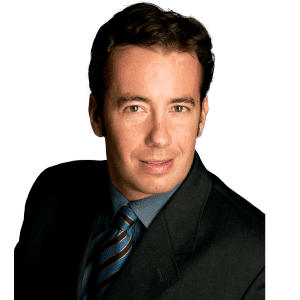
Dr Frati Cosmetic Surgery was established by internationally renowned surgeon to the stars Dr Riccardo Frati. Dr. Frati has featured on ITV’s This Morning, GMTV, featured in The Times, The Daily Mail, The Independent, The Daily Star, The Sun, FHM and 10 Years Younger; with countless mentions in celebrity magazines, online magazines and makeover reveals.
What are common reasons to get Rhinoplasty?
Numerous motivations drive individuals to opt for a rhinoplasty, also commonly known as a nose job. Among the primary reasons are:
1. Rectifying congenital defects or injuries: Some individuals are born with noses featuring irregular shapes or structural issues, while others may have experienced nose injuries during their lives. Rhinoplasty can effectively address these concerns, enhancing both the nose’s form and function.
2. Enhancing breathing: Structural problems or a deviated septum can obstruct nasal airflow, leading to difficulties in breathing through the nose. Rhinoplasty can provide a solution by correcting these issues and improving respiratory function.
3. Aesthetic improvements: Many people choose rhinoplasty primarily for cosmetic purposes. They may be dissatisfied with the size or shape of their nose or believe it does not harmonise with their other facial features. Rhinoplasty offers the means to reshape the nose, reduce its size, or enhance overall symmetry.
4. Bump removal: Individuals with nasal bumps or humps on the bridge of their nose often seek rhinoplasty to eliminate these imperfections and achieve a more harmonious nose appearance.
5. Nostril size reduction: Some people have larger-than-desired nostrils and may opt for rhinoplasty to reduce their size, thereby improving the nose’s aesthetics.
6. Deviated septum correction: A deviated septum can hinder breathing and may be addressed alongside rhinoplasty to restore proper nasal function.
It is crucial for individuals to maintain realistic expectations and gain a comprehensive understanding of the procedure before deciding to undergo rhinoplasty. A qualified plastic surgeon will assess each patient’s case, discuss the anticipated outcomes, and ensure they are well-informed about the process.
Is Rhinoplasty Right for me?
This versatile procedure addresses a wide array of issues, encompassing:
1. Correcting a bulbous tip: A bulbous tip denotes a round or rounded appearance at the nose’s end. Rhinoplasty can refine and define the tip’s shape for a more elegant look.
2. Straightening a crooked nose: Crooked noses can result from congenital factors or injuries. Rhinoplasty can realign the nose, enhancing its symmetry.
3. Eliminating a bridge hump: A hump on the nose bridge, stemming from congenital or injury-related factors, can be removed through rhinoplasty to create a smoother, more natural bridge.
4. Balancing nostril asymmetry: Some individuals exhibit unevenly sized or shaped nostrils. Rhinoplasty can rectify this asymmetry, enhancing the overall nose appearance.
5. Correcting a deviated septum: A deviated septum occurs when nasal cartilage and bone are misaligned, causing breathing difficulties. Rhinoplasty can rectify this issue, improving nasal airflow.
6. Reducing nose size: Some seek rhinoplasty to diminish overall nose size, achieving better facial harmony.
7. Reshaping the nose: Individuals may desire nose reshaping to enhance appearance or maintain facial proportion.
8. Enhancing breathing: Structural issues or a deviated septum can impede nasal breathing, which rhinoplasty can address, ultimately improving airflow.
It’s essential to recognise that rhinoplasty procedures vary according to each patient’s unique requirements and concerns. Dr Frati will evaluate your case and recommend the most suitable procedure to attain the desired outcome.
Book your FREE Consultation today!
Why choose a Specialist Rhinoplasty Surgeon?
Choosing Dr. Frati as your rhinoplasty surgeon, is crucial for several reasons. Here are some key factors highlighting the significance of selecting a rewnowned specialist for your rhinoplasty:
Experience and Expertise
Dr. Frati possesses extensive experience and profound expertise in performing rhinoplasty procedures. He has an in-depth knowledge of nasal anatomy and various techniques, along with a portfolio of before-and-after photos showcasing potential surgical outcomes.
Safety and Quality of Care
Dr. Frati ensures the highest standards of safety and care. He is equipped with the necessary resources, facilities, and a skilled team to optimize surgical outcomes while minimising associated risks.
Understanding of Facial Aesthetics
Dr. Frati has a profound understanding of facial aesthetics, emphasizing balance and proportion. He skillfully guides patients to attain desired outcomes while preserving overall facial harmony.
Patient-Centered Approach
Dr. Frati adopts a patient-centered approach, attentively listening to each patient’s specific needs and concerns. He collaboratively develops a tailored treatment plan.
Post-Operative Care
Dr. Frati provides comprehensive post-operative instructions and remains available for follow-up visits to ensure a smooth healing process. He can address any concerns or complications that may arise during recovery.
Revision Surgeries
Dr. Frati is well-versed in performing revision surgeries, addressing any issues that may surface after the initial procedure. He assesses each patient’s unique case and recommends the appropriate revision procedure for achieving desired results.
GMC Specialist Register
Dr. Frati is listed on the GMC specialist register within the relevant surgical specialty. He has completed extensive training and education in plastic surgery, signifying adherence to rigorous standards of training and expertise, as well as staying current with the latest advancements in the field.
Reviews and Referrals
Dr. Frati garners reviews and referrals from previous patients who have undergone procedures with him. These testimonials offer valuable insights into patient experiences and satisfaction levels.
Choosing Dr. Frati as your rhinoplasty surgeon is pivotal in achieving desired outcomes, minimizing surgical risks, and ensuring the highest level of safety and quality of care. Patients should conduct thorough research, carefully evaluate their options, and maintain realistic expectations regarding the surgery’s final results, which become apparent once swelling subsides. Dr. Frati excels in both primary and revision rhinoplasty, specialising in both aesthetic and reconstructive nose surgery. He is well-regarded for his patient-centric and thorough approach, consistently delivering natural results following rhinoplasty procedures.
Your Rhinoplasty Consultation
Dr. Frati dedicates time to attentively listen to your objectives for the procedure. Together, you and Dr. Frati will collaborate in defining the ideal nasal aesthetics that will complement your overall facial harmony. To enhance this process, 3D imaging may be employed. Additionally, Dr. Frati will conduct a thorough evaluation of your medical history, any prior surgical interventions, overall health, allergies, and your current medication regimen if applicable.
Rhinoplasty related questions which Dr Frati may ask you
Do you have any medical conditions like diabetes or hypertension?
Are you in good overall health without chronic medical conditions?
Are you currently taking any medications, and do you have any known allergies?
Have you undergone any prior surgeries, and were there any complications?
What are your desired outcomes for the rhinoplasty procedure?
Do you engage in smoking or alcohol consumption, and if so, to what extent?
Leveraging his considerable experience, Dr. Frati will propose the most suitable procedure or a combination of procedures to attain your desired outcome. He will also provide a comprehensive explanation of potential risks and complications. If you wish, you can request to view a set of before-and-after images of rhinoplasty, which can offer a preliminary understanding of what is achievable through this surgical process. It’s important to view these photos as informative references, as they do not guarantee the exact replication of a specific surgical outcome.
Rhinoplasty related you may want to ask Dr. Frati
How can I determine if a rhinoplasty is a suitable option for me?
Which technique is preferable: the open or closed approach?
If I’m not a candidate for a surgical procedure, should I consider a non-surgical rhinoplasty?
Is there a significant amount of post-procedure pain to anticipate?
What level of scarring is typical after the procedure?
Could you describe the recovery process and offer guidance for achieving optimal results during the healing period?
Am I maintaining realistic expectations regarding the desired outcomes?
Given my specific concerns, how many similar procedures have you performed in the past?
May I review before-and-after rhinoplasty images that are similar to my case?
What should I do if the results fall short of my expectations?
In roughly 25% of consultations, Dr. Frati may not advise a rhinoplasty procedure. This underscores the ethical standards and professionalism upheld by all surgeons at Dr Frati Cosmetic Surgery. Primarily, we are a healthcare facility, and our clinical decisions are entirely free from commercial influences.
The primary objective of the consultation is to empower all patients to make well-informed and wise choices regarding the possibility of a rhinoplasty procedure. Dr. Frati’s role is to facilitate this decision-making process, making the consultation a collaborative meeting between two experts: you and Dr. Frati.
Rhinoplasty FAQs
How much is Rhinoplasty?
Depending on many factors such as open or closed rhinoplasty's and also the bespoke requirements of each patient, you can expect rhinoplasty costs to start at £8,000 for closed and £10,300 for open rhinoplasty.
Is Rhinoplasty Surgery risky?
Every surgery is risky, period. There is always a risk of a reaction to anaesthesia for example, or internal bleeding, even infection of the operated area - unfortunately this is the nature of surgery. However, Dr. Frati is one of the best qualified surgeons in the UK and with this comes the mineralisation of risk, something to really take into account when choosing your surgeon.
How long does it take to recover from Rhinoplasty?
Whilst we would recommend to take around 2 weeks off work for recovery, it may take up to 6 months for swelling to completely disappear.
How long does Rhinoplasty surgery take?
Normally, Rhinoplasty surgery takes around 2-3 hours to complete
What's the difference between Male and Female Rhinoplasty?
Rhinoplasty is a widely performed cosmetic surgery procedure for both women and men. Notably, in the UK, it stands as the most frequently sought-after cosmetic surgery among men.
This procedure incorporates recognised surgical techniques suitable for both men and women, although gender differences in nasal structure yield distinct treatment goals. These structural distinctions often lead to different objectives for each gender.
Patients opt for rhinoplasty for various reasons, including addressing functional issues like breathing difficulties, enhancing the nose's aesthetics in harmony with their facial features, boosting self-confidence, and rectifying facial asymmetry. Common nasal irregularities include dorsal humps, bulbous or boxy tips, septal deviations, droopy nasal tips, narrow or wide noses, and noses deviated due to injury. The rhinoplasty surgeon's primary role is to identify the distinguishing features between male and female noses and devise surgical strategies to correct these abnormalities.
In men, rhinoplasty frequently involves achieving a straighter angle, enhancing definition, and reducing bulbous features. This results in a more pronounced appearance that complements the overall facial aesthetics. Many men also seek rhinoplasty to correct nose deviations from past injuries or to smooth out localised irregularities.
Conversely, women often opt for more subtle, less conspicuous changes to maintain facial balance. A commonly requested procedure is to reduce the appearance of a droopy nasal tip, often associated with a dorsal hump. Our surgeons, for both men and women, are skilled in addressing individual nasal concerns that hold personal significance. Typically, men seek a more chiseled or defined nose without excessive narrowing that could create a pinched nasal tip. The art of rhinoplasty surgery lies in tailoring each procedure to the patient's unique anatomy to help them achieve their objectives.
In many instances, there are marked differences in nasal structure between men and women. Women often have shorter noses and thinner skin, while many men possess thicker, more sebaceous skin. This thicker skin can lead to a larger, bulbous nasal tip, a feature more common in men and sometimes associated with a condition called rhinophyma.
The global COVID-19 pandemic has resulted in a surge of video conferencing, making many men more self-conscious about their appearance during these virtual interactions. Rhinoplasty distinguishes itself from other cosmetic surgeries by not only enhancing aesthetics but also improving the nose's functionality to restore overall facial balance. Patients, particularly men, who undergo rhinoplasty often report heightened self-confidence, leading to increased comfort in their appearance during video calls.
Male nose job surgery can be combined with other facial procedures, with the most prevalent combination being chin augmentation using an implant to achieve a more defined and stronger chin profile in addition to rhinoplasty.
As one of the UK's most reputable private rhinoplasty units, Dr. Frati is proficient in a range of rhinoplasty techniques, including open rhinoplasty, closed rhinoplasty, septo-rhinoplasty, rhino tip surgery, ultrasonic rhinoplasty, and revision rhinoplasty.
How do I prepare for Rhinoplasty?
Preparation for rhinoplasty, involves several crucial measures to facilitate a smooth surgery and a comfortable, speedy recovery. Here are key steps that patients should take in readiness for rhinoplasty:
- Consultation with a Qualified Plastic Surgeon: It's essential to consult with a seasoned plastic surgeon experienced in rhinoplasty, such as Dr. Frati. The surgeon will assess the patient's unique case, discuss their surgery objectives, and provide a comprehensive overview of the procedure, including potential risks and complications.
- Medical Evaluation: Patients must undergo a medical evaluation to ensure they are in good health and eligible for safe surgery. Dr. Frati will review your medical history, conduct a physical examination, and order any necessary lab tests.
- Smoking Cessation and Medication Review: Smoking can impede the healing process, so patients should quit smoking at least six weeks before the surgery. Additionally, certain medications, such as aspirin and non-steroidal anti-inflammatory drugs (NSAIDs), should be avoided, as they can elevate the risk of bleeding.
- Arrange Post-Operative Care: You should make arrangements for post-operative care, including transportation home after the surgery and having someone to stay with them for the initial few days to assist with tasks like bathing and dressing.
- Adherence to Pre-Operative Instructions: Dr. Frati will furnish the patient with detailed pre-operative instructions, covering dietary and beverage guidelines, pre-surgery preparation, and post-surgery wound care. Adhering closely to these instructions is crucial for a smooth recovery.
- Understanding the Recovery Process: The recovery following rhinoplasty can span several weeks. You should familiarise yourself with what to expect during this phase and plan accordingly. Swelling and bruising are normal post-surgery effects, and activities such as sports, heavy lifting, and exercise should be avoided for at least two weeks.
- Realistic Expectations: It is paramount for patients to harbour realistic expectations regarding the surgery's outcomes. It is important to comprehend that the final results will only become visible once the swelling has entirely subsided.
By following these steps, you can effectively prepare for rhinoplasty, ensuring a smooth surgical experience with Dr. Frati and a comfortable, expedited recovery.
What scars will I have after Rhinoplasty?
The type and location of scars resulting from a nose job (rhinoplasty) are contingent on the specific technique employed by Dr. Frati. In an "open" rhinoplasty, an incision is made across the columella (the skin between the nostrils), enabling the surgeon to lift the skin from the underlying nasal structures. This grants access to the underlying cartilage and bone for necessary adjustments. In a "closed" rhinoplasty, all incisions are internal, minimising visible scarring. Nevertheless, the chosen technique will also consider individual cases, patient requirements, and Dr. Frati's preference.
Following the surgery, incisions are closed with sutures, and the healing process spans several weeks to months. Once healing is complete, most scars are concealed within the natural creases of the nose, making them inconspicuous. Nonetheless, it's important to bear in mind that the final results of the surgery may not be immediately apparent. It may take several months for swelling to subside and for the definitive shape of the nose to emerge.
It's essential to acknowledge that scarring is an inherent component of any surgical procedure. While all possible efforts are made to minimise scarring, there is no absolute guarantee that scars will remain entirely imperceptible. Therefore, it is crucial to discuss potential scarring with Dr. Frati before opting for the surgery.
Rhinoplasty Anaesthesia options
During rhinoplasty surgery, anaesthesia is administered to ensure the patient’s comfort and freedom from pain during the procedure. Various anaesthesia options are available for rhinoplasty, with the choice depending on the patient’s individual needs and preferences.
Here are the most common anesthesia options used during rhinoplasty:
1. Local Anaesthesia – Local anaesthesia involves injecting a numbing agent directly into the surgical site. It is typically used for minor procedures where the patient doesn’t need to be fully unconscious. Local anaesthesia is often complemented with IV sedation, a mild form of anesthesia that induces relaxation and drowsiness.
2. IV Sedation – IV sedation, administered through a vein, is a gentle form of anaesthesia that makes the patient drowsy and relaxed while allowing them to respond to commands and maintain independent breathing. IV sedation is frequently combined with local anaesthesia.
3. General Anaesthesia (Total Intravenous Anaesthesia – TIVA) – General anaesthesia, known as TIVA when administered through an IV, induces a state of sleep and unconsciousness during the procedure. This type of anaesthesia is typically reserved for more complex surgeries or patients who cannot tolerate the procedure with IV sedation or local anaesthesia.
The choice of anaesthesia is determined by the patient’s specific needs and preferences, as well as the complexity of the surgery. Factors such as the patient’s medical history, current health conditions, and Dr. Frati’s recommendation are considered in selecting the most appropriate anaesthesia option. Ultimately, the patient will collaborate with an anaesthesiologist to make the best decision.
It’s essential to emphasise that, regardless of the anaesthesia type chosen, the patient will be under continuous monitoring by an anesthetist throughout the procedure to ensure their safety and comfort.
When considering rhinoplasty, it’s essential to understand that like any surgical procedure, there are inherent risks involved. However, choosing a highly reputable and experienced surgeon can significantly minimise these risks and ensure a successful outcome. Dr. Frati has built his reputation on his expertise, cutting-edge techniques, and meticulous aftercare, making him an excellent choice for patients seeking rhinoplasty.
One of the primary risks associated with rhinoplasty is the potential for complications during or after the procedure. These can include bleeding, infection, adverse reactions to anesthesia, or poor wound healing. However, under the care of an experienced surgeon like Dr. Frati, who is well-versed in the latest advancements in rhinoplasty techniques, the likelihood of such complications is significantly reduced.
Another risk to consider is the possibility of unsatisfactory aesthetic results. However, Dr. Frati’s exceptional reputation and extensive experience in rhinoplasty make him highly skilled at achieving natural and harmonious outcomes that align with each patient’s unique facial features and desires.
To further mitigate risks, Dr. Frati emphasises meticulous aftercare, closely monitoring patients’ progress and providing necessary guidance throughout the healing process. This personalised approach ensures optimal recovery and minimizes the potential for complications.
Are there any Rhinoplasty Risks?
When considering rhinoplasty, it’s essential to understand that like any surgical procedure, there are inherent risks involved. However, choosing a highly reputable and experienced surgeon can significantly minimise these risks and ensure a successful outcome. Dr. Frati has built his reputation on his expertise, cutting-edge techniques, and meticulous aftercare, making him an excellent choice for patients seeking rhinoplasty.
One of the primary risks associated with rhinoplasty is the potential for complications during or after the procedure. These can include bleeding, infection, adverse reactions to anesthesia, or poor wound healing. However, under the care of an experienced surgeon like Dr. Frati, who is well-versed in the latest advancements in rhinoplasty techniques, the likelihood of such complications is significantly reduced.
Another risk to consider is the possibility of unsatisfactory aesthetic results. However, Dr. Frati’s exceptional reputation and extensive experience in rhinoplasty make him highly skilled at achieving natural and harmonious outcomes that align with each patient’s unique facial features and desires.
To further mitigate risks, Dr. Frati emphasises meticulous aftercare, closely monitoring patients’ progress and providing necessary guidance throughout the healing process. This personalised approach ensures optimal recovery and minimizes the potential for complications.
Rhinoplasty Faster Healing Tips
There are several steps you can take to help speed up your rhinoplasty recovery period, these can include:
Adhere to Medication Regimen: Your surgeon may prescribe pain medication and antibiotics to manage pain and prevent infection. It is imperative to adhere to the prescribed medication regimen and refrain from discontinuing it until advised to do so by your surgeon.
Avoid Smoking: Smoking can impede the healing process, trigger infections, and prolong recovery time. It is strongly recommended to refrain from smoking during the recovery period.
Attend Scheduled Follow-Up Appointments: Dr. Frati will schedule follow-up appointments to monitor your progress and ensure the proper healing of your nose. It is vital to attend these appointments as scheduled.
Adhere to Postoperative Guidelines: Dr. Frati will furnish you with specific instructions for postoperative care, encompassing nose cleansing, sleeping positions, and scheduled follow-up visits. It is imperative to meticulously follow these instructions to mitigate complications and expedite the healing process.
Maintain an Elevated Head Position: Keeping your head elevated can help mitigate swelling and bruising. Utilise pillows to prop yourself up when sitting or lying down.
Utilise Cold Compresses: Applying cold compresses to your face can aid in reducing swelling and bruising. Ice packs or frozen peas wrapped in a cloth can be used for this purpose.
Refrain from Strenuous Activity: For at least two weeks following surgery, abstain from strenuous activities and heavy lifting. This precaution serves to minimise the risk of bleeding and swelling.
It is imperative to remember though, that every one is different and recovery periods will vary from each patient, and please follow Dr.. Frati’s recommendations for the best outcome!
